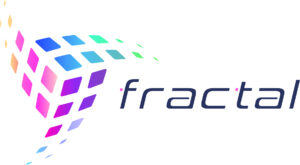ERIC is an old, legacy technology applied to voter rolls in a declining number of states.
The underlying technology ERIC and most database firms use has been around since the early 1980s. It is comprised of large data centers or clouds (someone else’s data center), relational technology, server banks and code built by DevOps teams.
Those days are ancient history.
To build an ERIC equivalent from scratch with this legacy technology would take a year or two to build, cost millions of dollars, take another year or two or three to deploy and cost millions of dollars a year to operate.
The worst part is there would continue to be zero visibility to what ERIC is doing – or its replacement. That kind of technology does not lend itself to transparency.
Using a new tech stack like Fractal, the entire ERIC system could be replaced for the current states in a single business quarter.
The costs would be a fraction of what they would be with current technology.
Most importantly, the result would be an agile, lean system, running on hardware the size of a dining room table, yielding whatever visibility its users desired.
The great news is this system is already built, in full production, running a dozen or more states, and generating far more accurate data on cleaning voter rolls than ERIC could ever deliver.
As of today, Fractal runs the entire voter rolls of up to 20 states. The numbers change from time to time as more state election integrity teams add their data.
Unlike ERIC, this system keeps multiple “snapshots” of those voter rolls from different dates. Now exceeding 1.7 billion records due to the snapshots, the system enables users in key swing states to see any change to any voter or address over the time period(s).
If a voter moves from one county to another, that will be picked up in different snapshots. If a voter changes their name or address, that is shown in snapshots.
Snapshots also keep an eye on the election officials.
If a person is “inactive” but changed to active and voted, then move to inactive, the system picks that up and flags it.
Cannot even attempt that with the technology in ERIC.
If a person lives in a prison, church, cognitive care facility or a score of other locations likely to be questionable, they are flagged.
The Fractal Election Integrity System is built for the current century, not the 1980s.
Current users, either an election integrity group, candidate or election official need to constantly reconcile every voter and address to make sure elections are honest. With its real time access, the Fractal system makes all data available, on a phone or tablet, in seconds – today.
How does a state government try this out?
Very simple answer here.
The Fractal team will set up a parallel system with ERIC in any state where ERIC is or has been dealing with that state’s data.
In 30 days, the Fractal system will be running every voter database, down to the county and precinct level, with all changes reported daily. Fractal will ingest at least one county’s property tax records – and do a county level compare. The results are usually stunning.
Typically, there is no charge to a state to do this other than any expenses, which are usually zero.
The state can choose to bring in the Fractal system and run it behind the state’s firewall, the state providing the updates and support with help from Fractal.
The state can have the Fractal team host and run the system. The state can have a third-party host and run the system.
The Fractal system identified thousands, in cases tens of thousands of ineligible voters in many states and reported them to election integrity teams.
The Fractal analysis yields visibility, transparency and full auditability – now.

